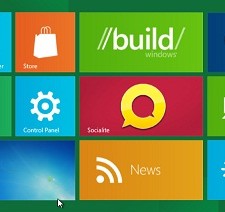 Windows 8 is rapidly taking shape, and on the surface it looks fantastic. On the surface. Only on the surface. Under the hood things are a little messier, because at its heart Windows 8 is still Windows, the same Windows that we’ve known, and loved and hated in equal measure, since it debuted under Bill Gates leadership in 1985.
Windows 8 is rapidly taking shape, and on the surface it looks fantastic. On the surface. Only on the surface. Under the hood things are a little messier, because at its heart Windows 8 is still Windows, the same Windows that we’ve known, and loved and hated in equal measure, since it debuted under Bill Gates leadership in 1985.
The question that really has to be asked is whether Microsoft would have been better building Windows 8 from scratch? Would starting again and building from the ground up have been a better strategy than effectively plugging the holes?
First, let’s look at Windows 8 in more detail, and thanks to Microsoft’s insatiable need to share we know a lot about Windows 8 already, even though it’s at least a year away from being unleashed on the public. Steven Sinofsky, President of the Windows Division at Microsoft headquarters in Redmond, is keeping us in the loop with the Building Windows 8 blog.
Windows 8 is a two-headed beast. Its user interface (called Metro) will be the default for all users regardless of their machine of choice, is big, bold, and colorful. Under the hood, doing all the hard work, is Windows 7 with bells on. There have been a few small changes made here and there, with ribbons being integrated left, right, and center, but it’s still the same old Windows.
httpvh://www.youtube.com/watch?v=p92QfWOw88I
The trouble is that the shiny new UI is gaining all the attention and taking all the plaudits. Rightly so, I guess, because it is regarded as a triumph, both visually and in terms of usability. But it was conceived with tablets in mind, being finger-friendly and reminiscent of Windows Phone 7 mobile OS. At this point in time most people don’t own tablets, and those that do own Apple iPads. So it’s a gamble.
The Windows desktop PC users know all too well exists on Windows 8 as an app, given equal billing as Angry Birds and Facebook. But it’s still there, in the background, with all its inherent security flaws and decades-old issues. Which seems a little bizarre. It’s as though Microsoft wants to forge its way into the future, competing with Apple and Google as it does so, but feels the need to hold on to the past, its past, a past that many would say needs to be left well behind if the company is to remain as the giant it currently is.
I can’t help feeling that Microsoft is trying to please all of the people all of the time, which is, as we know, impossible. There is a very real risk that Windows 8 will sit between the two camps – the classic and the modern – and please nobody. It may have been a more worthy strategy for Microsoft to face the future head on and build Windows 8 completely from scratch. Sure, it may have meant an extra year or two’s wait, but Windows 7 is serving most people’s needs adequately at this stage. And with firms upgrading from XP and Vista en masse, a delay wouldn’t have been too detrimental to Microsoft’s revenues.
Perhaps a better question to ask would be whether Microsoft should build Windows 9, or whatever its next, next operating system is called. Because that has to deliver on all fronts in the way Windows 7 managed to. It is notoriously difficult trying to cater to everyone at the same time, and that could eventually prove to be Microsoft’s downfall.
Image Credit: magn3tik

Leave a Reply
You must be logged in to post a comment.